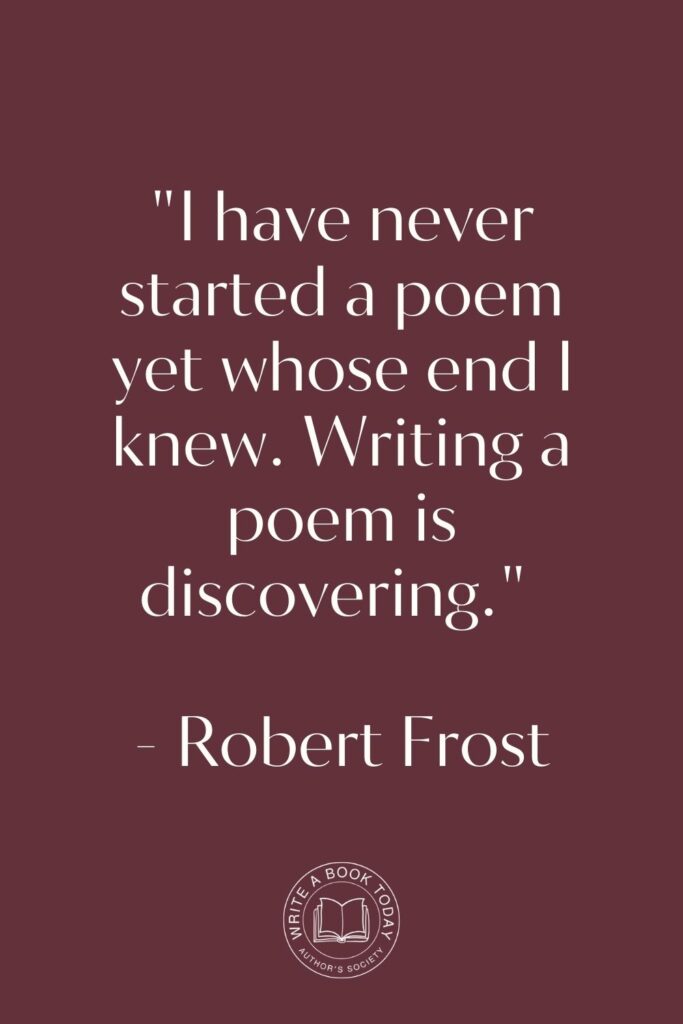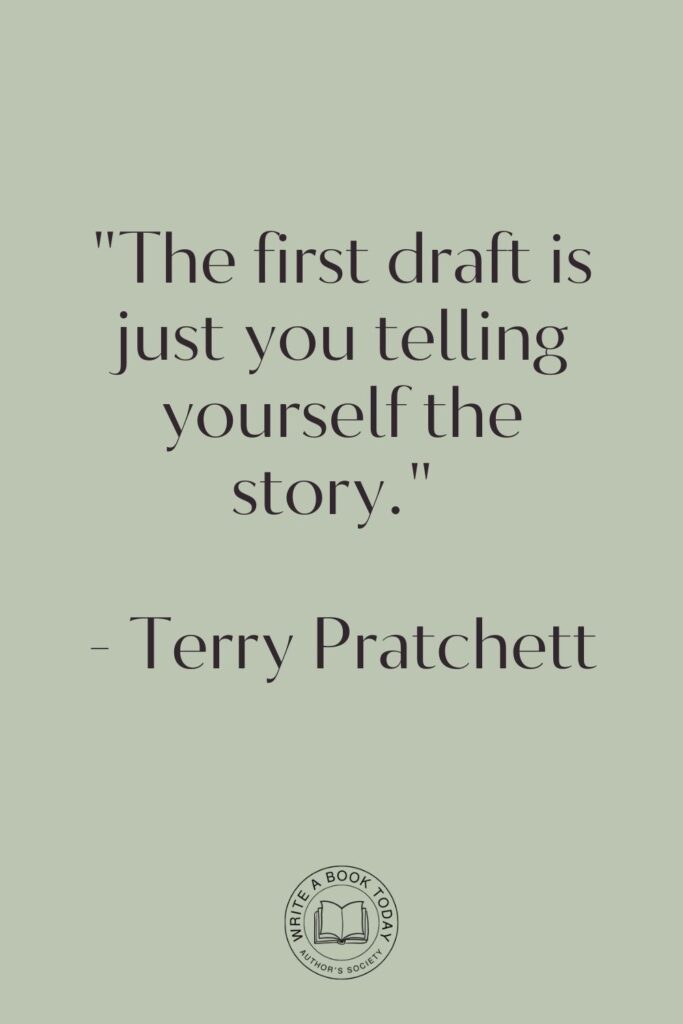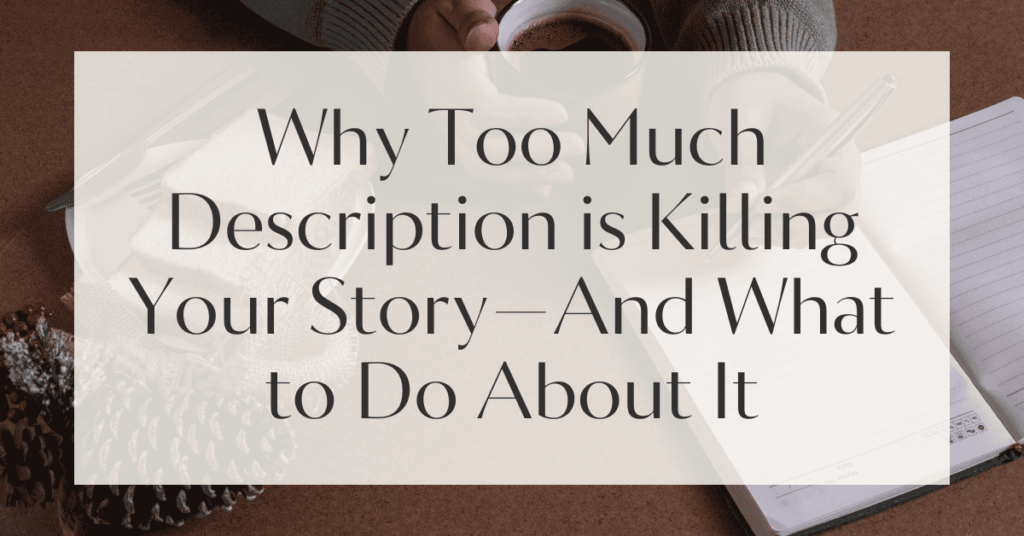Have you ever found yourself lost in a sea of words, drowning in the minutiae of a scene that seems to go on forever?
You’re not alone.
Many writers struggle with excessive description in storytelling, which can stifle the narrative flow and leave readers yearning for the plot to progress.
But fear not! Understanding how to identify and trim down these verbose passages can breathe life back into your story, keeping readers engaged and eager for more.
Let’s dive into the art of balancing description with action, ensuring your narrative shines brightly.
Understanding Excessive Description in Storytelling
Excessive description in storytelling is like a dense fog that obscures the vibrant landscape of your narrative.
It’s when the writer indulges in lengthy portrayals of settings, characters, or objects, losing sight of the plot’s forward momentum.
While vivid imagery is a vital tool in a writer’s arsenal, overusing it can lead to a sluggish pace and disengaged readers.
Google Docs is for notes. Scrivener is for novels. Upgrade your writing game and try it for free today!

The Impact of Excessive Description on Narrative Flow
When description takes center stage, the story’s rhythm can suffer.
Imagine reading a thriller where every detail of a room is painstakingly described before any action occurs.
The tension fizzles out, and the reader’s anticipation wanes.
This imbalance can cause the narrative to feel heavy and cumbersome, akin to trudging through mud when you should be sprinting across a field.
Focus on essential details that drive the plot or reveal the character. This approach keeps readers invested and maintains the narrative’s momentum.
Why Less Can Be More: The Benefits of Conciseness
Conciseness in storytelling is akin to a sculptor chiseling away the excess stone to reveal the masterpiece within.
By trimming unnecessary details, you allow the core of your story to shine.
Readers appreciate when a narrative respects their time, delivering impactful scenes without needless embellishment.
This efficiency not only enhances readability but also strengthens the emotional impact of your story.
Consider the works of Hemingway, who famously advocated for brevity.
His minimalist style leaves room for readers’ imaginations to fill in the gaps, creating a partnership between writer and audience that enriches the reading experience.

Identifying Excessive Description
Spotting excessive description in your work requires a keen editorial eye.
Look for passages where the story stalls or where the description overwhelms the action.
These are often areas ripe for revision.
Common Pitfalls: When Description Becomes Overkill
Common pitfalls include overloading scenes with adjectives, providing exhaustive physical descriptions of characters upon their introduction, or detailing every item in a room.
Such practices can bog down the narrative, causing readers to skim in search of the next plot point.
Remember, the goal is to paint a picture with broad strokes, not to recreate the entire canvas.
- Avoid piling on adjectives and adverbs unnecessarily.
- Be wary of interrupting action with lengthy descriptions.
- Focus on what is unique or essential about a setting or character.
Tools for Self-Editing: Cutting Down on Description
Self-editing is a writer’s best friend when combating excessive description.
Start by reading your work aloud; this can highlight awkward phrasing or areas where the description drags.
Next, employ the “rule of three”: limit yourself to describing three key elements in a scene. This constraint forces you to prioritize what truly matters.
Consider using a table to track and balance your descriptions:
| Scene | Description Elements | Action Elements |
|---|---|---|
| Opening Scene | Weather, protagonist’s attire, setting mood | Protagonist’s goal, conflict introduction |
| Climactic Moment | Key visual detail, antagonist’s expression | Confrontation, resolution |
Use beta readers to gain fresh perspectives on your descriptions. They can provide invaluable feedback on whether your scenes engage or overwhelm.
No marketing platform? No social following? No problem!
Publisher Rocket helps you market your debut novel like a pro.
It’s a gamechanger for debut authors – try it today!


Effective Storytelling Techniques to Replace Over-Description
Replacing over-description with dynamic storytelling techniques can transform your narrative.
By integrating action, dialogue, and subtext, you can convey the richness of your world without drowning in detail.
Utilising Dialogue for Description
Dialogue can serve as an effective tool for description, allowing characters to reveal details naturally.
For instance, instead of describing a room in detail, let characters comment on its state or react to it.
This approach keeps the narrative active and character-driven.
Consider how dialogue can hint at a character’s background or the history of a location without explicit exposition.
This method not only economizes words but also enriches character development and plot.
Show, Don’t Tell: Engaging the Reader’s Imagination
The mantra “show, don’t tell” encourages writers to depict scenes through actions and sensory details rather than exposition.
Instead of stating that a character is angry, show them clenching their fists or speaking in short, clipped sentences.
This technique invites readers to infer emotions and motivations, making the narrative more engaging.
Use metaphors and similes to add depth to your descriptions without overwhelming the reader.
A well-placed comparison can evoke vivid imagery succinctly.
Using Action to Convey Setting and Emotion
Action can be a powerful vehicle for conveying setting and emotion.
Consider how a character interacts with their environment—do they move with ease, or are they hesitant and wary?
These interactions can reveal much about both the setting and the character’s internal state.
By focusing on action, you maintain a sense of movement and progression in your story, ensuring that descriptions enhance rather than hinder the narrative flow.

Creating a Balanced Narrative Flow
Achieving a balanced narrative flow is akin to orchestrating a symphony where each element plays in harmony.
Striking the right balance between description and action is crucial for maintaining reader engagement.
The Role of Pacing in Storytelling
Pacing is the heartbeat of your story, dictating how quickly or slowly events unfold.
A well-paced narrative alternates between moments of tension and reflection, allowing readers to catch their breath before plunging back into the action.
Balancing fast-paced sequences with slower, descriptive passages can create a dynamic and satisfying reading experience.
Consider the pacing of your favorite novels and how they vary rhythm to maintain suspense and interest.
This technique keeps readers on their toes, eager to turn the page.
Integrating Description Seamlessly into the Plot
Integrating description seamlessly into the plot requires skillful weaving of details into the action.
Instead of pausing to describe a setting, let it unfold through the character’s interactions with it.
A character brushing dust off a windowsill can suggest neglect without overtly stating it.
Revisit your draft with an eye for blending description and action.
Look for opportunities to merge the two, creating a cohesive narrative that flows effortlessly.

Examples of Effective and Ineffective Description
Learning from both effective and ineffective examples of description can sharpen your skills.
Examining how renowned authors handle description offers valuable insights into mastering this aspect of storytelling.
Literary Examples of Masterful Description
Authors like J.R.R. Tolkien and F. Scott Fitzgerald are celebrated for their descriptive prowess.
Tolkien’s lush landscapes and Fitzgerald’s evocative imagery transport readers into their worlds, yet each word serves the story’s purpose, enhancing rather than stalling the narrative.
Study these masters to understand how they balance detail with storytelling.
Notice how their descriptions illuminate character and theme, contributing to the narrative’s richness.
What to Avoid: Overly Detailed Descriptions
In contrast, overly detailed descriptions can detract from the story.
Long-winded passages that add little to character development or plot advancement risk alienating readers.
Avoid the temptation to describe every facet of a scene; instead, focus on what is essential to the story.
By learning to discern which details matter, you can craft a narrative that captivates without overwhelming, drawing readers into a world that feels both vivid and dynamic.
Feeling lost with your debut novel?
Fiverr Pro connects you with expert editors, designers, and marketers – everything you need to get your book ready for success!

Final Thoughts on Balancing Description and Action
Mastering the balance between description and action is key to creating compelling storytelling.
By recognizing and addressing excessive description in storytelling, you can enhance your narrative flow and keep readers engaged from start to finish.
Remember, every word should serve a purpose, guiding your audience through a rich tapestry of plot and character without losing sight of the story’s heart.
Embrace the power of concise, impactful writing, and watch your stories come alive with renewed energy and clarity.








